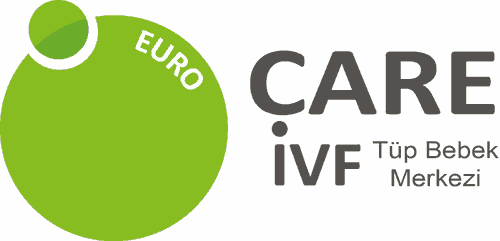 Uterine fibroids are a common disorder in women of reproductive age: About 20% to 50% of women have fibroids. Although many fibroids are completely harmless, you may still wonder how they may affect your IVF success and whether their removal would improve the outcome.
Uterine fibroids are a common disorder in women of reproductive age: About 20% to 50% of women have fibroids. Although many fibroids are completely harmless, you may still wonder how they may affect your IVF success and whether their removal would improve the outcome.
First, what are fibroids?
Uterine fibroids, also called myomas, are abnormal non-cancerous growths of the uterus composed of muscular and fibrous tissue that almost never develop into cancer.
Most often, fibroids don’t cause any symptoms and may go unnoticed until after a routine gynaecological examination or ultrasound scan. For women who do have symptoms, myomas are usually associated with:
- Abnormally heavy bleeding/painful periods
- Pelvic pain/pressure
- Pain/discomfort during sex
In rare cases, myomas may impair a woman’s fertility by causing changes to the endometrial environment.
Types of fibroids
Based on their size, localisation and growth, fibroids (myomas) are classified into three main categories:
- Subserosal (grow in the outer wall of the uterus)
- Intramural (found in the muscular layers of the uterine wall)
- Submucosal (protrude into the uterine cavity)
Submucosal fibroids are further divided into:
- Type 0 (fibroids with no intramural extension)
- Type I (fibroids with less than 50% intramural extension)
- Type II (fibroids with over 50% intramural extension)
Do fibroids cause infertility?
Fibroids that are greater than 6 cm in size, as well as those located inside the uterine cavity may affect your ability to get pregnant and deliver a healthy baby. Submucosal fibroids which protrude into the uterus and fibroids that block the openings of the fallopian tubes can also damage a woman’s fertility.
Uterine fibroids can affect fertility in several ways, including:
- Blocking the fallopian tubes which makes it challenging or impossible for a fertilised egg to descend into the uterus
- Changing the shape of the cervix, which can affect the amount of sperm that can enter the uterus
- Changing the shape of the uterus, which can interfere with the movement of the sperm or embryo
- Changing the thickness of the uterine lining which can interfere with embryo implantation
- Reducing the blood flow into the uterine cavity, which can affect the ability of an embryo to implant or develop
Most women who have fibroids will not experience infertility. If an individual or couple have conception problems, they should find out if there are other factors involved before seeking treatment for fibroids. A fertility specialist will evaluate whether fibroids alone are the cause of infertility and whether any treatment is required prior to pursuing IVF.
Can fibroids affect my pregnancy?
The most common complication of fibroids during pregnancy is pain, especially in women with fibroids larger than 5 cm who are in their last two trimesters.
Fibroids may increase your risk for other complications during pregnancy and delivery, such as:
- Fetal growth restriction (placental insufficiency and subsequent reduction in oxygen and nutrients delivered to the baby)
- Placental abruption (separation of the placenta from the uterine wall)
- Preterm delivery (premature birth of babies)
- Cesarean delivery (surgical delivery of the baby)
- Breech position (feet-first position of the baby)
- Miscarriage (pregnancy loss)
Close monitoring of the uterine myomas and uterine size is recommended during pregnancy because they may grow larger and create complications. If fibroids happen to regrow after treatment, this is most likely to occur during the first 12 weeks of pregnancy.
Options for treating fibroids
There are several treatment options for fibroids:
Medications
Medications can temporarily improve symptoms but do not make fibroids go away. Women with heavy bleeding may benefit from medication before undergoing surgery. Several drugs can help manage fibroids:
- Contraceptive pills and progestational agents (used to reduce bleeding and regulate menstrual cycles; not recommended for women over the age of 35)
- GnRH agonists (can temporarily shrink fibroids and stop heavy bleeding by blocking the production of estrogen)
- Intrauterine devices (typically used to prevent pregnancy, progestin-releasing IUDs can decrease heavy bleeding)
Myomectomy
Myomectomy is a surgical procedure to remove fibroids while preserving the uterus. For women who have fibroids and want to have children in the future, myomectomy is the best approach. Although myomectomy is very effective, there’s a possibility of fibroids to grow again, especially if you’re younger and have more fibroids at the time of operation.
A myomectomy can be performed in several ways:
- Abdominal myomectomy (an incision is made through the skin on the lower abdomen)
- Laparoscopic myomectomy (four one-centimetre incisions are made in the lower abdomen through which long instruments are inserted to remove the fibroids)
- Hysteroscopic myomectomy (used only for submucosal fibroids, the procedure involves placing a speculum in the vagina and passing instruments through the hysteroscope to shave off the fibroids)
Hysterectomy
Hysterectomy is a surgical procedure in which the uterus is removed. Although symptoms stop and new fibroids cannot grow, a woman can no longer become pregnant after a hysterectomy.
There are several types of hysterectomy:
- Vaginal hysterectomy (removing the uterus through the vagina)
- Abdominal hysterectomy (the uterus is removed through a horizontal incision on the lower abdomen)
- Laparoscopic hysterectomy (the uterus is removed through very small incisions on the lower abdomen)
Uterine artery embolisation (UAE)
Uterine artery embolisation is a relatively new procedure which involves blocking the blood flow to the fibroid(s), causing them to shrink and die.
Fibroids and IVF treatment
In vitro fertilisation (IVF) is a fertility treatment in which the egg is fertilised by sperm outside the female body (in vitro). The fertilised egg is then implanted into the woman’s uterus to grow and to develop into a baby.
To reach a healthy pregnancy and be able to carry a baby to term, a woman’s uterus should be in an optimal state. When there are uterine fibroids, the shape of the uterus may be distorted or the blood flow to the uterus may be altered, which in turn may affect pregnancy success.
The number of cycles required to achieve an ongoing pregnancy in women with submucosal myomas is slightly higher than in intramural or subserosal fibroids. Hysteroscopic removal of small fibroids that protrude into the uterine cavity may be recommended prior to IVF treatment.
The clinical pregnancy rates are usually higher after IVF with ICSI (intracytoplasmic sperm injection) in women with intramural or subserosal fibroids of above 4 cm compared with women with submucosal myomas. However, these rates tend to be lower compared with women with no fibroids or fibroids ≤4 cm. Fibroids that are bigger than 3 cm and do not distort the cavity are linked to lower delivery rates, whereas smaller fibroids do not appear to have adverse effects on live-birth rates.
Should you consider surgery before IVF?
Your doctor will take the number and size of fibroids, the overall size of the uterus, history of previous surgery and ovarian accessibility into account before deciding whether you should have surgery.
The presence of uterine fibroids in women undergoing assisted reproduction cycles seems to affect outcomes, especially if these myomas are larger than 4 cm. If a woman in her late 30s has a single myoma of 4cm size or less that is not protruding into the cavity (and is not distorting the uterus), she may be advised to try IVF without myomectomy. If that fails or ends in a miscarriage, she may be recommended surgery before the second cycle. However, larger and multiple myomas, especially in a woman under 35 may be surgically removed before her first IVF cycle.
Single subserosal myomas smaller than 5cm in size may not pose any problem to the success of the treatment and the patient may be allowed to go through IVF without prior surgery. However, if these are larger, surgery may be considered before the start of the IVF cycle.
If fibroids cause difficulties with ovarian accessibility, surgery will be advised before you start ovarian stimulation as part of IVF. Patients usually wait for three months before proceeding with IVF postoperatively, but older women with a reduced ovarian reserve may proceed with treatment earlier and freeze embryos for future use.
Tips to conceive faster with fibroids
Here are some easy tips that can help you feel better:
- Eat plenty of fruits (like apples and tomatoes), cruciferous vegetables (like broccoli and cabbage), and whole-grain foods (e.g. brown rice, buckwheat, bulgur (cracked wheat), millet, oatmeal, whole-wheat bread/past)
- Regularly check your blood pressure and find healthy ways to manage it through diet, lifestyle or medication
- Reduce your stress level by trying relaxation techniques like yoga, massage, acupuncture or tai chi
- If you’re having painful periods because of your fibroids, keep your legs elevated using a pillow, or lie on your side and bring your knees into your chest.
- Consult your doctor for any supplements that may be beneficial for you like vitamin D
Make the best family decision with EuroCARE IVF!
Fibroids (also known as myomas) are a common reproductive disorder in women of childbearing age. If fibroids do not have any adverse effect on your fertility or pregnancy, you may need to have regular monitoring for size and growth. However, if they impact your ability to conceive — either naturally or through IVF — then you will be recommended a suitable treatment for fibroids before proceeding with an assisted conception procedure like IVF.
If you suspect you have fibroids and have been trying to conceive for 12 months (6 months if you are over 35), you might want to consider scheduling a free online appointment with the EuroCARE IVF fertility specialist, Dr Yucel Inan. He will assess the potential impact of your fibroids on your reproductive health and advise on the best course of treatment for your conception problem.
